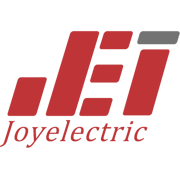Understanding the Importance of Choosing the Right Casting Process
When it comes to OEM manufacturing, choosing the right casting process is crucial for the overall success of the project. The casting process plays a significant role in determining the quality, cost, and lead time of the final product. Therefore, it is essential to carefully evaluate the different casting processes available and select the one that best fits your specific requirements.
Consider the Material Requirements
One of the key factors to consider when choosing the right casting process for OEM manufacturing is the material requirements of the final product. Different casting processes are better suited for certain materials, so it is important to identify the specific material properties needed for your project. Whether you require high strength, corrosion resistance, or heat resistance, the casting process must be able to deliver the desired material properties.
Evaluating Production Volume and Lead Time
Production volume and lead time are important considerations when selecting a casting process for OEM manufacturing. Some casting processes are more suitable for low-volume production runs, while others are better suited for high-volume production. Additionally, certain casting processes may have shorter lead times than others, which can impact the overall timeline of your project.
Assessing Cost and Budget Constraints
Cost is always a significant factor in OEM manufacturing, and choosing the right casting process can have a direct impact on the overall cost of the project. Different casting processes have varying costs associated with them, so it is essential to evaluate your budget constraints and select a process that aligns with your financial goals. Keep in mind that the cheapest option may not always be the most cost-effective in the long run.
Quality and Precision Requirements
The quality and precision requirements of your OEM manufacturing project will also influence the choice of casting process. Some processes may offer higher precision and tighter tolerances, while others may be more suitable for producing complex geometries. It is crucial to assess your quality standards and choose a casting process that can deliver the level of quality and precision required for your application.
Understanding the Advantages of Different Casting Processes
There are several different casting processes available for OEM manufacturing, each with its own set of advantages and limitations. Processes such as sand casting, investment casting, die casting, and continuous casting offer unique benefits in terms of cost, speed, and material flexibility. By understanding the advantages of each process, you can make an informed decision on which one is best suited for your project.
Consulting with Casting Experts
If you are unsure about which casting process to choose for your OEM manufacturing project, it can be helpful to consult with casting experts. Experienced professionals in the casting industry can provide valuable insights and recommendations based on their knowledge and expertise. They can help you navigate the complexities of different casting processes and guide you towards the most suitable option for your specific needs.
Considering Environmental and Sustainability Factors
In today's environmentally conscious world, it is essential to consider the environmental and sustainability factors of the casting process. Some processes may generate more waste or have a higher carbon footprint than others, which can impact the eco-friendliness of your manufacturing operations. By choosing a casting process that aligns with your sustainability goals, you can minimize your environmental impact and contribute to a more sustainable future.
Testing and Prototyping Before Full-Scale Production
Before committing to a specific casting process for your OEM manufacturing project, it is advisable to conduct testing and prototyping to validate the process. By creating prototypes and conducting test runs, you can assess the performance and feasibility of the chosen casting process before moving into full-scale production. This iterative approach can help you identify any issues or potential improvements early on and ensure a smoother production process.
Continuous Evaluation and Optimization
Even after selecting a casting process for your OEM manufacturing project, it is crucial to continuously evaluate and optimize the process to improve efficiency and quality. By monitoring key performance indicators and collecting feedback from stakeholders, you can identify areas for improvement and make necessary adjustments to optimize the casting process. Continuous evaluation and optimization are essential for achieving long-term success in OEM manufacturing.

